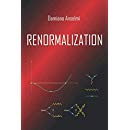Topological field theory
Certain topological invariants of the moduli space of gravitational instantons are defined and studied. Several amplitudes of two and four dimensional topological gravity are computed. A notion of puncture in four dimensions, that is particularly meaningful in the class of Weyl instantons, is introduced. The topological embedding, a theoretical framework for constructing physical amplitudes that are well-defined order by order in perturbation theory around instantons, is explicitly applied to the computation of the correlation functions of Dirac fermions in a punctured gravitational background, as well as to the most general QED and QCD amplitude. Various alternatives are worked out, discussed and compared. The quantum background affects the propagation by generating a certain effective “quantum” metric. The topological embedding could represent a new chapter of quantum field theory.
Class.Quant.Grav. 14 (1997) 2031-2047 | DOI: 10.1088/0264-9381/14/8/006
With the perspective of looking for experimentally detectable physical applications of the so-called topological embedding, a procedure recently proposed by the author for quantizing a field theory around a non-discrete space of classical minima (instantons, for example), the physical implications are discussed in a “theoretical” framework, the ideas are collected in a simple logical scheme and the topological version of the Ginzburg-Landau theory of superconductivity is solved in the intermediate situation between type I and type II superconductors.
Class.Quant.Grav. 14 (1997) 1015-1036 | DOI: 10.1088/0264-9381/14/5/010
Topological Yang-Mills theory with the Belavin-Polyakov-Schwarz-Tyupkin $SU(2)$ instanton is solved completely, revealing an underlying multi-link intersection theory. Link invariants are also shown to survive the coupling to a certain kind of matter (hyperinstantons). The physical relevance of topological field theory and its invariants is discovered. By embedding topological Yang-Mills theory into pure Yang-Mills theory, it is shown that the topological version TQFT of a quantum field theory QFT allows us to formulate consistently the perturbative expansion of QFT in the topologically nontrivial sectors. In particular, TQFT classifies the set of good measures over the instanton moduli space and solves the inconsistency problems of the previous approaches. The qualitatively new physical implications are pointed out. Link numbers in QCD are related to a non abelian analogoue of the Aharonov-Bohm effect.
Class.Quant.Grav. 14 (1997) 1-20 | DOI: 10.1088/0264-9381/14/1/005
I develop a formalism for solving topological field theories explicitly, in the case when the explicit expression of the instantons is known. I solve topological Yang-Mills theory with the $k=1$ Belavin et al. instanton and topological gravity with the Eguchi-Hanson instanton. It turns out that naively empty theories are indeed nontrivial. Many unexpected interesting hidden quantities (punctures, contact terms, nonperturbative anomalies with or without gravity) are revealed. Topological Yang-Mills theory with $G=SU(2)$ is not just Donaldson theory, but contains a certain link theory. Indeed, local and non-local observables have the property of marking cycles. From topological gravity one learns that an object can be considered BRST exact only if it is so all over the moduli space $M$, boundary included. Being BRST exact in any interior point of M is not sufficient to make an amplitude vanish. Presumably, recursion relations and hierarchies can be found to solve topological field theories in four dimensions, in particular topological Yang-Mills theory with $G=SU(2)$ on $R^4$ and topological gravity on ALE manifolds.
Nucl.Phys. B439 (1995) 617-649 | DOI: 10.1016/0550-3213(95)00024-M
We consider the problem of removing the divergences in an arbitrary gauge-field theory (possibly nonrenormalizable). We show that this can be achieved by performing, order by order in the loop expansion, a redefinition of some parameters (possibly infinitely many) and a canonical transformation (in the sense of Batalin and Vilkovisky) of fields and BRS sources. Gauge-invariance is turned into a suitable quantum generalization of BRS-invariance. We define quantum observables and study their properties. We apply the result to renormalizable gauge-field theories that are gauge-fixed with a nonrenormalizable gauge-fixing and prove that their predictivity is retained. A corollary is that topological field theories are predictive. Analogies and differences with the formalisms of classical and quantum mechanics are pointed out.
Class.Quant.Grav. 11 (1994) 2181-2204 | DOI: 10.1088/0264-9381/11/9/005

 Quantum Gravity
Quantum Gravity 


